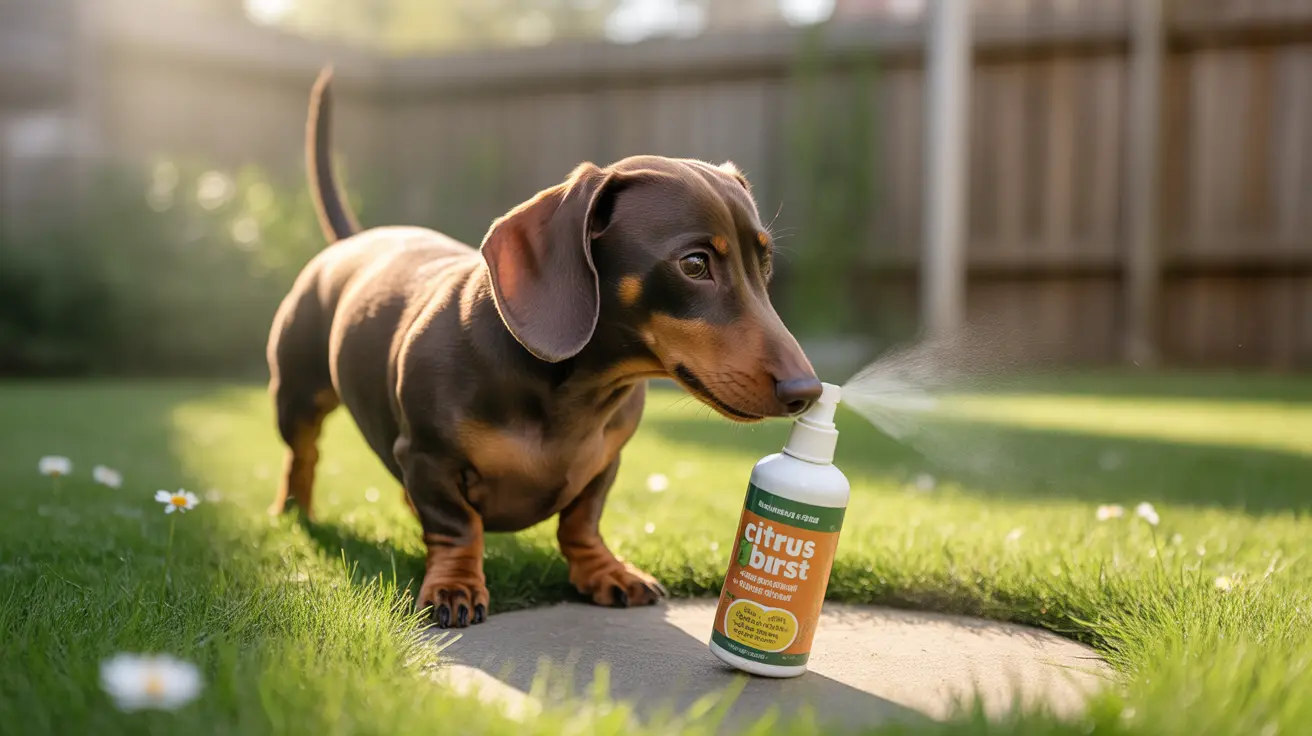Most Effective Natural Dog Pee Deterrents
Citrus Solutions
Dogs have a natural aversion to citrus scents, making lemons, oranges, and grapefruits excellent deterrents. You can create an effective spray by mixing fresh lemon juice with water and baking soda, or simply place citrus peels in problem areas. This solution is particularly effective for indoor use and won't harm your furniture or flooring.
Vinegar Mixtures
Both white and apple cider vinegar create powerful deterrents thanks to their strong, acidic smell. Create a solution using equal parts vinegar and hot water, then spray it in target areas. For enhanced effectiveness, combine both types of vinegar - just be sure to keep this mixture away from plants, as it can cause damage.
Safe and Effective Essential Oils
Several essential oils prove effective at deterring dog marking, including:
- Eucalyptus
- Citronella
- Peppermint
- Cinnamon
- Sour apple
When using essential oils, always dilute them properly (3-5 drops per 12 oz of water) and test on a small area first. Never apply undiluted oils, as they can cause irritation to both pets and humans.
Natural Spice-Based Deterrents
Cayenne pepper and chili powder can create effective deterrent sprays when mixed with water. However, use these with caution and in moderate concentrations to avoid causing discomfort to your pet. A ratio of one part pepper to ten parts water is generally safe and effective.
Coffee Grounds and Alternative Solutions
Used coffee grounds serve as an excellent outdoor deterrent, thanks to their bitter smell and dark color. Scatter them around garden borders or problem areas, but ensure they're out of reach - coffee can be toxic if ingested by dogs.
Application Tips and Best Practices
Indoor Applications
When applying deterrents indoors:
- Always test on a small, hidden area first
- Allow surfaces to dry completely before allowing pet access
- Reapply as needed, typically every few days
- Clean marked areas thoroughly before application
Outdoor Applications
For outdoor use:
- Apply more liberally than indoor applications
- Reapply after rain or heavy dew
- Focus on perimeter areas and common marking spots
- Avoid applying directly to valuable plants
Frequently Asked Questions
What household smells are most effective at deterring dogs from peeing in unwanted areas?
Citrus scents, vinegar, and essential oils like eucalyptus and peppermint are among the most effective household deterrents. Coffee grounds and spicy scents from cayenne pepper or chili powder also work well.
How can I safely use citrus or vinegar sprays to stop my dog from marking indoors or outdoors?
Mix equal parts vinegar and water, or combine lemon juice with water and baking soda. Always test on a small area first, apply evenly, and allow to dry completely before allowing pet access. For outdoor use, reapply after rain.
Are essential oils like eucalyptus or peppermint safe and effective as dog pee repellents?
Yes, when properly diluted (3-5 drops per 12 oz of water), these essential oils are safe and effective. Never use undiluted oils, and always ensure good ventilation in treated areas.
Can coffee grounds or chili powder keep my dog from urinating in the garden without harming them?
Yes, both are effective when used properly. Scatter used coffee grounds around borders, keeping them out of reach. For chili powder, create a diluted spray solution (1:10 ratio with water) and apply moderately.
What precautions should I take when using natural dog pee repellents to ensure my pet's safety?
Always dilute solutions properly, test in small areas first, and keep concentrated substances out of reach. Allow treated areas to dry completely, and avoid using harsh spices or essential oils in concentrated forms. Monitor your pet's reaction and discontinue use if any irritation occurs.
Conclusion
Using natural deterrents to manage your dog's marking behavior can be highly effective when done correctly. Remember to combine these solutions with positive reinforcement training for the best results. Start with milder deterrents like citrus or vinegar before moving to stronger options, and always prioritize your pet's safety and comfort when choosing and applying these solutions.






